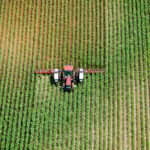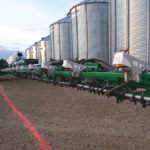Glacier FarmMedia – The findings of a University of Saskatchewan and York University study may affect the fate of insecticide seed treatments in Canada. The study, which was published Sept. […] Read more
Tag Archives pesticides

New neonic study points to songbird decline
The research, conducted in Ontario, says the insecticide suppresses appetite, disrupting migration

Know your tank mixes to avoid incompatibilities with sprayers, products
Jar tests, reading the label and asking trusted advisors are good steps
Farmers need to know whether the products they’re putting into their sprayer tanks will get along or whether they risk plugged nozzles, crop injury and reduced weed control, provincial extension […] Read more

Bayer cancels plans to sell U.S. crop product in 2020 over safety concerns
Chicago | Reuters – Bayer AG has scrapped plans for wide sales next year of a chemical that is intended to protect U.S. crops from yield-robbing worms, citing ongoing safety concerns. […] Read more

U.S., Canada, 14 others slam EU farm product regulation at WTO
Geneva | Reuters — The United States and 15 other countries launched a broadside of criticism at the European Union on Thursday, saying its “hazard-based” approach to regulating pesticides and […] Read more

Agricultural plastics not part of federal ban
The federal government’s plan to halt Canada’s consumption of single-use plastics such as shopping bags, straws and stir sticks over the next couple of years won’t extend to farm chemical […] Read more

Neonic seed treatments seen as safe for bees
Health Canada ruling yet to come on safety for aquatic insects
For years, groups like the David Suzuki Foundation and the Ontario Beekeepers Association have argued that neonicotinoid seed treatments represent a systemic threat to bees. “Health Canada… will be cancelling […] Read more

Canadian neonic, metabolite research shows insecticide effect on insect navigation
Locusts in wind tunnels exposed to neonics lost their ability to move themselves where they wanted
Drunk drivers are more likely to get in an accident because the alcohol in their blood impairs vision and delays reaction time. University of Saskatchewan biologists have identified a comparable […] Read more

Online sales of large volume inputs changing
In 2017, Farmers Business Network made its debut in Canada, and offers many programs with aggregated data
Farmers are increasingly looking at how they can price and buy their inputs online, but there are trust and relationship issues to overcome. Farmers already use digital platforms to buy […] Read more

U.S. EPA wins new chance to argue against pesticide ban
Reuters — The Trump administration has persuaded a U.S. appeals court to reconsider its recent decision ordering the Environmental Protection Agency to ban the widely-used pesticide chlorpyrifos, which critics say […] Read more

Solving spray problems with new technology
Sprayer innovations can help reduce herbicide resistance by making sure lethal doses are delivered to weeds
How farmers spray their crops — not just what they spray — could be contributing to growing weed resistance across Canada. Technology is emerging, though, that can help overcome common […] Read more
